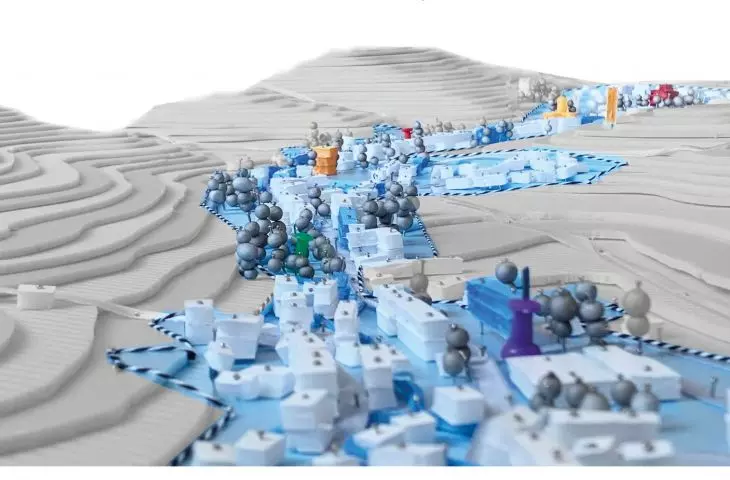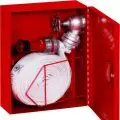Maja Stankowska and Mateusz Baranowski - students of the Faculty of Architecture at the Wrocław University of Technology - have won the international competition
"Urban Design Award" organized by the Faculty of Architecture of the Czech Technical University in Prague. The jury appreciated their comprehensive concept for the revitalization of the Podgórze district in Walbrzych.
comprehensive revitalization plan
© Maja Stankowska, Mateusz Baranowski
competition
The International UrbanDesignCompetition "Urban Design Award" has been organized for 28 years by the Faculty of Architecture of the Czech Technical University in Prague, in cooperation with the Association of Urbanism and Spatial Planning of the Czech Republic. The competition evaluates works submitted by students related to architecture and urban planning from universities in the Visegrad Group countries. The competition jury, composed of experienced architects and planners, appreciated the carefully conducted analyses and detailed maps and site mock-ups presented by the winners from Wroclaw University of Technology. They also appreciated the potential impact of the adopted solutions on improving the quality of life of Walbrzych residents. The strategy of sustainable development, contributing to the restoration of the functionality of the existing urban fabric, was recognized.
Maja Stankowska and Mateusz Baranowski at the Urban Design Award gala.
© Maja Stankowska, Mateusz Baranowski
Walbrzych Podgórze
Situated in a picturesque basin surrounded by mountains, the city of Walbrzych is known for its rich industrial history, with dominant factory buildings. After the mines closed in 1998, this city's economy declined, leading to high unemployment and a depopulation process that continues to this day. Efforts are now being made to restore Walbrzych's former glory through tourism development and job creation. The city's iconic buildings, located in the Podgórze district, are in need of immediate revitalization, or they will be threatened with demolition.
The railroad viaduct in Walbrzych-Podgórze
© Maja Stankowska, Mateusz Baranowski
During the site visit, the students noticed several examples of ongoing revitalization efforts. One of them is the renovation of undeveloped green areas, intended to promote social integration. However, the pocket parks project is an unfriendly and empty place, devoid of greenery.
pocket parks in Walbrzych-Podgórze
© Maja Stankowska, Mateusz Baranowski
improving the quality of life
The main motivation for the project was to improve the quality of the environment and make living in Walbrzych-Podgórze more attractive. Maja Stankowska and Mateusz Baranowski emphasize:
Our goal was not only to find architectural solutions, but above all to improve the quality of life of the residents. We are happy that our work has been appreciated, but the most important thing for us is that we can contribute to positive changes in the public space, or at least provoke a discussion about it.
Their revitalization strategy was divided into four stages:
1. uncovering the river, which is currently hidden under the main street.
2. developing a commercial zone.
3. Creation of a cultural and social activity center.
4. Revitalization of post-industrial areas.
Uncovering the river and increasing biodiversity
The first stage of the project focused on uncovering the river, which is currently hidden in a canal that stretches along Main Street. The most important task was to restore the river to its natural state in order to create green recreational spaces for residents, while creating a hiking trail leading to the mountains. This phase also proposed transforming existing pocket parks into rain gardens and undeveloped squares into "watersquares." Examples include skateparks, which, in the event of higher rainfall and rising river levels, could collect excess water and become reservoirs, which could promote biodiversity in the city.
green zone
© Maja Stankowska, Mateusz Baranowski
commercial zone development
The second stage concerned improving the quality of the existing commercial zone by creating a dynamic and functional service space. In order to encourage residents to spend time in this space, it would be necessary to reduce car traffic, restore the river and improve pedestrian and bicycle traffic, which will improve air quality. In addition, the creation of a representative square, the introduction of new public services and the offering of preferential conditions for local entrepreneurs (e.g., a reduction in rent in city premises) would promote the emergence of new stores, restaurants and entertainment venues to serve the local community and attract tourists.
commercial zone
© Maja Stankowska, Mateusz Baranowski
creation of a center for culture and social activity
The third stage of the project involved transforming the old Evangelical church and its surroundings into a local cultural center. The idea was to create a multifunctional space, providing a focal point for artistic activities and meetings of the local community. The concept also calls for the creation of an attractive plaza next to the church and incorporating it into the proposed cultural zone, which would also house a cinema, a retirement home, a youth cultural center and a community activation center, as well as workshop and exhibition spaces. This interdisciplinary approach could improve intergenerational integration and create a space that is active and open to everyone.
cultural zone
© Maja Stankowska, Mateusz Baranowski
revitalization of post-industrial zones
The fourth stage concerned the revitalization of post-industrial zones, providing attractive spaces for residents, creating new jobs and expanding existing residential neighborhoods by densifying the area. The authors of the concept were keen to protect historical heritage by revitalizing unique buildings falling into disrepair and making them livable places. Preserving historic architecture is important for the city and its identity, and also contributes to improving tourist appeal.
industrial zone
© Maja Stankowska, Mateusz Baranowski
The project focuses on presenting a catalog of universal solutions with a strategic and organized structure, which could be implemented not only in the Podgórze district, but in any district or locality with similar potential and problems.









































